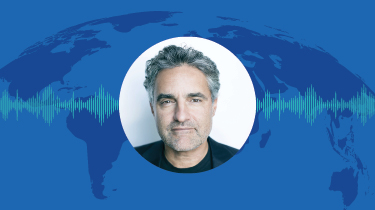Sean O’Reilly is founder and CEO of B.C.’s Arcana Studios, a Canadian entertainment company that provides content across multiple platforms.
You can read about Arcana Studios’ export journey here.
What advice would you give to an SME breaking into a new market?
It’s good to conduct research. Print publishing decreases every year primarily through digital-age paradigm shifts. Those who were innovative and were publishing to the iPad five years ago were ahead of everyone else. You’re better off to be a pioneer and trailblazer. See what others have done, and see what worked, but then try forging ahead on your own.
If you could summarize your export journey in one word, what would it be?
Ambitious.
What makes you most nervous about exporting content these days?
Changes to NAFTA are the main one, but intellectual property as well. It’s beyond challenging to protect content globally, if not almost impossible. We see Howard Lovecraft backpacks online, and we get nothing from it, nothing at all. It’s copyright infringement.
Yes, Amazon will remove these products, but then more will pop up. YouTube should use an algorithm to recognize the same file that gets loaded over and over again. They do it with music; they can do it with film.
What excites you about exporting and where do you see the most opportunities?
I think we’re doing fairly well in Asia, but I would like to do more there. Europe will be a target market for us as well. As far as content opportunities, virtual reality is a new area that we must focus on.
How has the trading world changed for you since the election of a protectionist government in the U.S.?
With NAFTA nothing has changed yet. I received an email the other day saying that Trump is going to slash the American library system federal budgets to virtually nothing. If that happens, that will affect us to some extent because it buys our content.
What was your first export sale?
In 2003, I published our first comic book called Kade. It cost $3,500 to print, and we hustled and sold all 5,000 copies for $3 each.
Following that, we published a graphic novel and sold it for $20 a copy – a better margin. That made me realize we can actually make some money with this. Today, (our) publishing arm is self-sufficient, and is publishing new intellectual properties every month.
When and why did you first start thinking about exporting as part of your business?
Immediately on day one. The U.S. is 10 times the size of Canada. That’s why we focused on that market.
How did that first export opportunity arise?
We shipped our first comic book through a distributor and sold all the copies in the U.S. Many sold at the San Diego comic book show, and the rest through Diamond Comics.
Is there a specific story/anecdote from your company’s history that you would consider a critical moment for your export journey?
There are two: Definitely signing the agreement with our U.S. distributor Diamond in 2003 was a huge moment, as it was our first distribution sale for publishing.
The other was the distribution sale for Pixies (the movie) in the U.S. in 2013 – the movie came out in 2015.
So, one was publishing and the other was animation.
What was your export journey like to get to where you are today?
Slow and steady wins the race. Every year we’ve had strong growth, more employees, and higher revenues.
What is the biggest difference between selling in Canada and selling in another country?
No major differences in animation with similar consumers and systems in Canada, the U.S., Europe, Australia, and even Asia. The differences come through storytelling and the background knowledge audiences come with.
How did you adapt to that difference?
We had to learn one new thing at a time and are focused on universal storytelling.
Can you share the best lesson learned from a bad-exporting experience?
We’ve had lots of bumps and bruises, but I would not identify any as bad experiences.
If I had to name one, it would be “investors” with big promises that have contacted me from India, the U.S., and China who ultimately wasted my time.
What do you know now that you wish you knew when you started exporting?
I wish I would have been more of a pioneer, but it’s hard to be a futurist and also run things day to day. The day to day generates the income and revenue.
If you’re always trying to create the next big thing, you might hit it big like creating the next Instagram, or you might be one of the thousands of companies that tried to be like that and didn’t make it. Overall, I took a fairly safe approach.
What characteristics do you believe every exporter should possess?
Hard work and patience.





